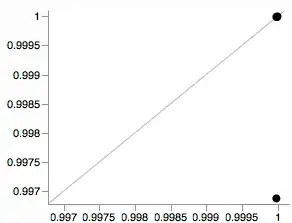I am trying to conduct a temporal cluster analysis on a terrorism dataset, but I've hit a bit of a brick wall regarding the method.
The dataset spans between 01-01-2015 and 31-12-2019, and for my 3 target cities, the main data file consists of 1 daily ttset column, and 1 column for attack_count. The vast majority of the entries for attack_count will be 0 due to terrorist attacks being generally uncommon, but because of this, any cluster analysis I use tends to find clusters in the "0"s instead of the "1"s, "2"s or so on.
I have access to SPSS and Stata, but I'm not really sure what method of cluster analysis would be best for this dataset, as clustering is very unlikely to be present; ultimately making me wonder if my results are bad because there's no clustering, or because I've picked the wrong method.
Any advice would be greatly appreciated, thanks!
